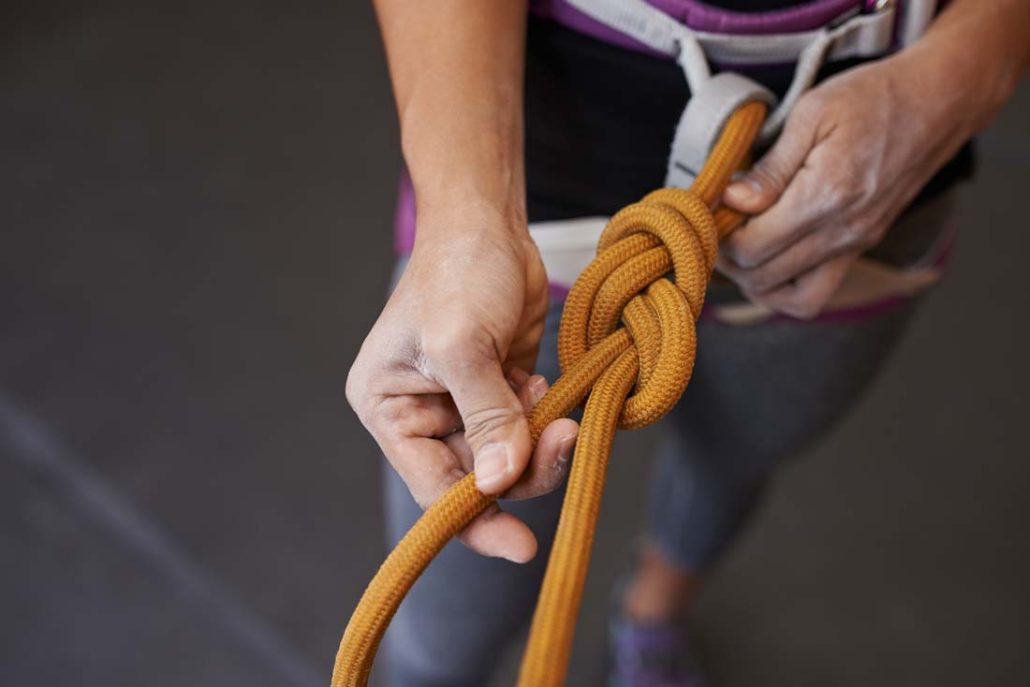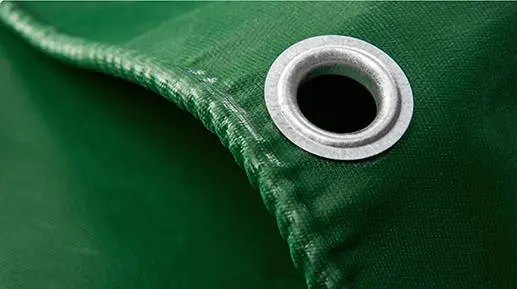Our garments and everyday fabrics face a constant battle against snags, rips, and tears. However, what are the ways that we can assess if a fabric is resistant to such? In this article, you will learn about the tear quality of fabric which includes tear resistance and tear strength.
We’ll disentangle these terms for you, differentiate them from abrasion resistance, and demystify them on how to identify the toughest textiles. Discovering the material known for its resilience as well as understanding the industry standard for tearing tests is all contained in this guide.
What is Meant By Tear Resistance?
Tear resistance tells us how well a fabric can withstand any pulling forces after it has been torn. Simply put, it refers to how strong a textile is when it comes to preventing more tearing. A high level of tear resistance means that once torn, it cannot be easily extended.
Tear strength is a key factor in its longevity and adaptability to harsh conditions. A classic example is the necessity for outdoor gear such as tents and backpacks to possess high tear resistance so that they can withstand the demands of hiking and camping.
Importance of Tear Resistance
The significance of tear resistance cannot be overemphasized. Fabric durability is guaranteed by this feature which enables it to last longer under extreme situations. The fabric’s manufacture into other items also boosts their safety and reliability. For instance, workwear and protective equipment should have a high tensile strength to give appropriate protection when used in tough environments.
Furthermore, high tearing strength levels enhance fabric quality overall. Durable products that cater to long-lasting needs are expected by customers hence fabrics with a long life span meet such expectations. This is especially vital within competitive markets where product quality heavily influences customer satisfaction as well as brand reputation.
What Materials Are Tear Resistant?
Numerous substances have tear-proof features. The tear ability of a textile is dependent on the sort of fibers it is made from, how it has been woven or knitted, and any special finishes applied to it.Below are some common materials that resist tearing.
1.Nylon
Nylon is an artificial fiber that is recognized for its potency and robustness. It can still be used in outdoor gear like tents, backpacks, and parachutes since it weighs lightly but is yet hardy nylon does not tear easily because of its pliancy and durability.
2.Polyester
Polyester is also known as a synthetic fiber that has low stretching and shrinking abilities making it very durable too. To increase fabric’s resistance against tearing, polyester often gets blended with other fibers. This makes this material great for clothing as well as industrial uses because of its strength and versatility.
3.Kevlar
Kevlar is a high-performance aramid fiber whereby strength is incredible while being resistant to tearing at the same time. Bulletproof vests, protective clothing as well as high-performance sports equipment are made out of Kevlar which needs to be extremely tough when used in such items; Kevlar happens to have the most amazing qualities thus making it one of the highest-rated materials for tear resistance available among others.
4.Ripstop Fabrics
The weave pattern in ripstop fabric includes thicker threads at regular intervals to make the material more tear-resistant. This way, a rip cannot easily progress through the entire fabric since there is extra resistance at every inch of it, thus making ripstop fabrics suitable for outdoor gear, military uniforms, and sails. The construction of ripstop fabrics is such that they are highly durable and less prone to tearing.
5.Cordura
Cordura is a brand name for a durable fabric that does not easily tear apart. It is formed from high-tenacity nylon or polyester fibers as examples of materials extensively used in luggage, military gear, and performance apparel. Cordura fabrics have strong make up which helps them survive unforgiving conditions without getting ripped off.
6.Dyneema
Dyneema also called ultra-high-molecular-weight polyethylene (UHMWPE) is a lightweight but very strong fiber material used in manufacturing climbing ropes, cut-resistant gloves, and military gears among others. Due to its high strength abilities together with exceptional tear resistance capability, Dyneema can be used even in demanding applications where durability is a major factor to consider.
What Fabric Is Hardest To Tear?
The most difficult fabrics to tear are usually those made from high-performance fibers like Kevlar or Dyneema. Those materials are designed to be very strong and last long, hence making them almost impossible to tear normally. Here are some examples of the toughest fabrics:
- Kevlar Fabric
Kevlar is an aramid fiber with amazing strength and great tear resistance. It finds use in products that demand extreme durability and wear resistance such as body armor, helmets, and high-performance sports equipment. Because of its unique properties, it is one of the hardest fabrics to tear.
- Dyneema Fabric
Dyneema is a kind of polyethylene that has exceptional strength and is lightweight too. It is used in applications requiring high tearing strength such as climbing gear, cut-resistant gloves, and military equipment among others. Owing to its remarkable toughness, it qualifies as one of the strongest fabrics.
- Spectra Fabric
Spectra similar to Dyneema is another type of high-performance fiber used for bulletproof vests fishing lines industrial ropes etc., It has superior strength properties against tears which generally makes it suitable for durability-based uses.
- Cordura Fabric
Cordura fabrics, made from high-tenacity nylon or polyester fibers, are hard-wearing and tear-proof. Outdoor gear, luggage, and military equipment are the common applications of these fabrics. They are very resistant to wear and tear and can put up with tough conditions which makes them ideal for demanding situations.
- Ripstop Fabric
The ripstop fabric has a special reinforcing weave that incorporates thicker threads at regular intervals. This weave helps prevent tears from getting longer which is why ripstop fabric has a very high resistance to tearing. Such materials find use in tents, kites as well as other outdoor gear that needs durability and resistance to ripping.
What is the Difference Between Tear Strength and Tear Resistance?
Tear strength is not the same as tear resistance even though they are interrelated. Understanding the difference between these terms is important for choosing the right material for a specific application.
Tear Strength
The tear strength of a fabric refers to how much force it takes to initiate it tearing apart when pulled or cut; an important property where objects might come into contact with sharp edges or heavy loadings exist on the fabrics concerned. A high level of this characteristic means that fabric will require considerable power before breaking apart under stress caused by forces acting upon it such as those of gravity during vertical ascent/decent flights for example.
Tear Resistance
Equally, tearing resistance is the aptitude of a fabric to hamper or stop tears from becoming bigger. It gauges how well the material can withstand more tearing after the initial tear has taken place. This attribute is critical in ascertaining the fabric’s durability and life span. When a fabric has high tear resistance ability, it means that even if it is torn, it will not extend quickly, thus making it stronger.
Therefore, while tear strength measures the force needed to start a rip or break, tear resistance tests how well a textile can mitigate such an occurrence. These two attributes are key in gauging the steadfastness and efficiency of all textile materials.
What is the Difference Between Abrasion Resistance and Tear Resistance?
Abrasion-resistant and tear-resistant at their core are ways of describing different forms of damage that fabric endures.
Abrasion Resistance
On the other hand, abrasion resistance is said to occur when fabrics resist frictional surface wear such as rubbing scraping, or erosion with time. It assesses whether materials will stand up against rubbing off over long periods; this might also be called scuffing off due to frequent usage scratches. Fabrics have varying abrasion resistances depending on where they are used including contact with rough surfaces and constant movements like upholstery works plus outdoor clothing goods.
Tear Resistance
As said before, tear resistance refers to a fabric’s ability to stop the spread of a rip. It measures how much energy is required to extend an already existing slit. For fabrics that could be subjected to sharp objects or heavy loads which may cause them to tear, tear resistance is crucial.
In sum, abrasion resistance addresses how well the fabric can handle wear on its surface, and tear resistance concerns itself with preventing the spread of a tear. Both these properties are important for maintaining durability and performance in fabrics meant for different uses.
What is the Normal Range for the Tear Test?
The acceptable range for tear test results depends on the type of fabric and its intended use. In Newtons (N) or pounds-force (lbf), tear tests measure the force required for propagation of a slit in any textile material.
Lightweight Fabrics
These are usually used in clothing and light outdoor gear and generally have lower values for tearing ability. For lightweight textiles, the normal range of tearing strength data ranges between 5-25 N (1.1-5.6 lbf).
Medium-weight Fabrics
These fabrics are commonly used for upholstery, tents, and workwear and hence have moderate values of tear resistance. The range of normal tear test results is 25-75 N (5.6-16.9 lbf) for medium-weight fabrics.
Heavyweight Fabrics
Heavyweight fabrics are generally found in heavy-duty outdoor gear, tarps, and industrial applications where their tear resistance values tend to be higher. The normal range for tear test results for these fabrics is usually between 75-150 N (16.9-33.7 lbf).
High-performance Fabrics
High-performance materials such as Kevlar, Dyneema, or Cordura have been developed with high tearing strengths in mind. As regards these samples, the natural range of tear test results can go beyond 150 N (33.7 lbf), reaching several hundred Newtons if any.
However, it should be understood that those ranges are only approximate guidelines due to variations in specific requirements within various fields and industries.
What is a Normal Tear Rate?
The rate at which a tear extends through a fabric after initiation is called the tear rate. It forms an essential part in determining how resistant against tearing as well as how durable the cloth will be in general terms. Depending on factors such as compothe section of fiber structures and finishes or treatments to fabrics this may vary greatly anywhere from one fabric to another.
Standardized tearing tests are typically used to control and quantify the tear rate employing specialized equipment. The tear rate is commonly given in terms of how far a tear moves in a unit of time such as millimeters per second (mm/s) or inches per minute (in/min).
Lightweight Fabrics
These textiles, worn on clothing and light outdoor gear, usually have higher rates of tear due to their low resistance to tears. Normal speeds of tears in lightweight fabrics may range between 1-10 mm/s (0.04-0.4 in/s).
Medium-weight Fabrics
They are used for upholstery, tents, workwear, etc., and these medium-weight materials generally fall within a moderate range of tear rates. For this type of material, the usual speed of tearing will be between 0.5-5 mm/s (0.02-0.2 in/s).
Heavyweight Fabrics
In industrial applications, tarps, and heavy-duty outdoor gear where they can be found; heavyweight fabrics usually have lower tear rates because they have higher tear resistance qualities. In this cathe se, the normal speed of tearing could be from 0.1-2 mm/s (0.004-0.08 in/sec).
High-performance Fabrics
These high-performance fabrics like Kevlar, Dyneema, and Cordura are meant to withstand extreme forces with their tensile strengths being very high and the associated tearing rates low normally below 0.1 mm/s (0.004 in/s).
However, these ranges are just guidelines since specific needs vary depending on the end-use application as well as industry standards that apply.
How to Assess Fabric Tear Quality?
To evaluate the quality of a fabric’s tear, its tear resistance, strength, and rate must be tested using standard methods and tests. Below are the steps for assessing fabric tear quality:
1. Selecting the Appropriate Test Method
Several standardized testing procedures exist to evaluate textile tearing features like the Elmendorf test, tongue tear test as well as trapezoid tear tests. It is important to note that the choice of test depends on fabric type and end-use.
Elmendorf Tear Test
The Elmendorf Tear Test is a common type of measurement used to gauge the resistance of fabrics to tearing. A pendulum is used to apply a tearing force to a pre-cut slit in the fabric. Then, the amount of force needed for it through measured as well as recorded. This method can be applied to various types of textile materials and gives an accurate account of their ability to resist tears.
Tongue Tear Test
This is commonly referred to as Single Rip Tear Test or Tongue Tear Test where an incision is made and both sides of the cut pulled away from each other so that the rupture spreads further. The measured amount and registered force that will keep this going should be enough for this purpose: those textile products that are used in situations where there are concentration point-based torn materials.
Trapezoid Tear Test
This test is conducted by making a cut on the fabric in the form of trapezium and clamping it into a testing machine. Then, the tearing force is applied to the narrow end of the trapezium, and this force is also measured and recorded for further comparison. It can be used to evaluate fabrics meant for areas where tear forces are distributed over broad regions.
2. Preparing the Test Specimens
The fabric samples are cut according to specific geometries as specified by tests in the standard procedures. For reliable results, these samples are conditioned under controlled conditions. Failure to prepare specimens properly can lead to unreliable test results.
3. Conducting the Tear Test
These tearing forces are executed on specialized equipment with which a given sample’s forces will be produced. The measure of tear propagation and rate of tearing are noted down after which they’re converted into Newtons (N) or lb-fs units respectively. To check if there’s any problem with the fabric’s ability to resist tears, it must undergo an accurate tear test.
4. Analyzing the Test Results
The outcome of the test is analyzed to know its tear strength, tear resistance, and tear index. The results are compared with industrial standards and specifications to determine if the fabric is fit for purpose. By analyzing the test outcomes, we can get helpful information concerning the fabric’s strength and lifetime.
5. Assessing Other Factors
Tear resistance should be considered along with other factors such as abrasion resistance, tensile strength, and puncture resistance to evaluate their effectiveness regarding fabric tear quality. By having an understanding of these properties, one gets a broader insight into how long-lasting or hard wearing a certain cloth may be. An appraisal of various aspects ensures that this cotton has been well evaluated.
6. Considering Fabric Construction and Treatments
The way fabric tears depends on fiber composition (natural or synthetic), structural pattern (weave or knit), and any treatments/coatings added to it. Evaluating these will give some ideas on how its durability can be increased by making it more resistant to tearing apart by improving the tear strength. Understanding how this cotton has been constructed/treated will go a long way in enhancing its performance.
How to evaluate fabric tear results
Understand the Intended Use: Knowledge concerning how the fabric will be used assists in identifying necessary tear resistance. For example, outdoor gear fabrics require higher levels of tear resistance as opposed to daily wear fabrics.
- Compare to Industry Standards:This helps ensure that the fabric meets the required quality levels by comparing test results with industry standards and specifications.
- Consider Environmental Factors:Such environmental factors as UV exposure, moisture, and temperature can affect tear resistance. Understanding its durability is better facilitated by assessing how well it performs under different conditions.
- Perform Multiple Tests: Conducting various tests on separate samples enhances consistency and reliability in results. It also points out any variations in the fabric’s tear resistance.
- Document the Process: Detailed records on test methods, sample preparation, and test results are essential for transparency and reliability in the assessment process.
Conclusion
Assessing the quality of a fabric’s tearing is necessary for checking that materials employed for diverse applications are long-lasting, secure, and appropriate for their intended purposes. With an understanding of wind tearing resistance concepts like tear strength, and rip rate; as well as the application of standard test procedures, it becomes possible to assess and enhance tearing capabilities.
Different materials, such as Kevlar, Dyneema, and Cordura, offer exceptional tear resistance, making them ideal for high-performance applications. Additionally, considering other factors like abrasion resistance and fabric construction helps provide a comprehensive assessment of fabric quality.
Ultimately, selecting the right fabric with the appropriate tear resistance properties ensures that the material can withstand the demands of its intended use, contributing to its longevity and reliability.
For more information on textile testing methods/standards
or textile testing machines, contact us:
What’s App: +86 180 2511 4082
Tel: +86 769 2329 4842
Fax: +86 769 2329 4860
Email: medium@chiuvention.com



